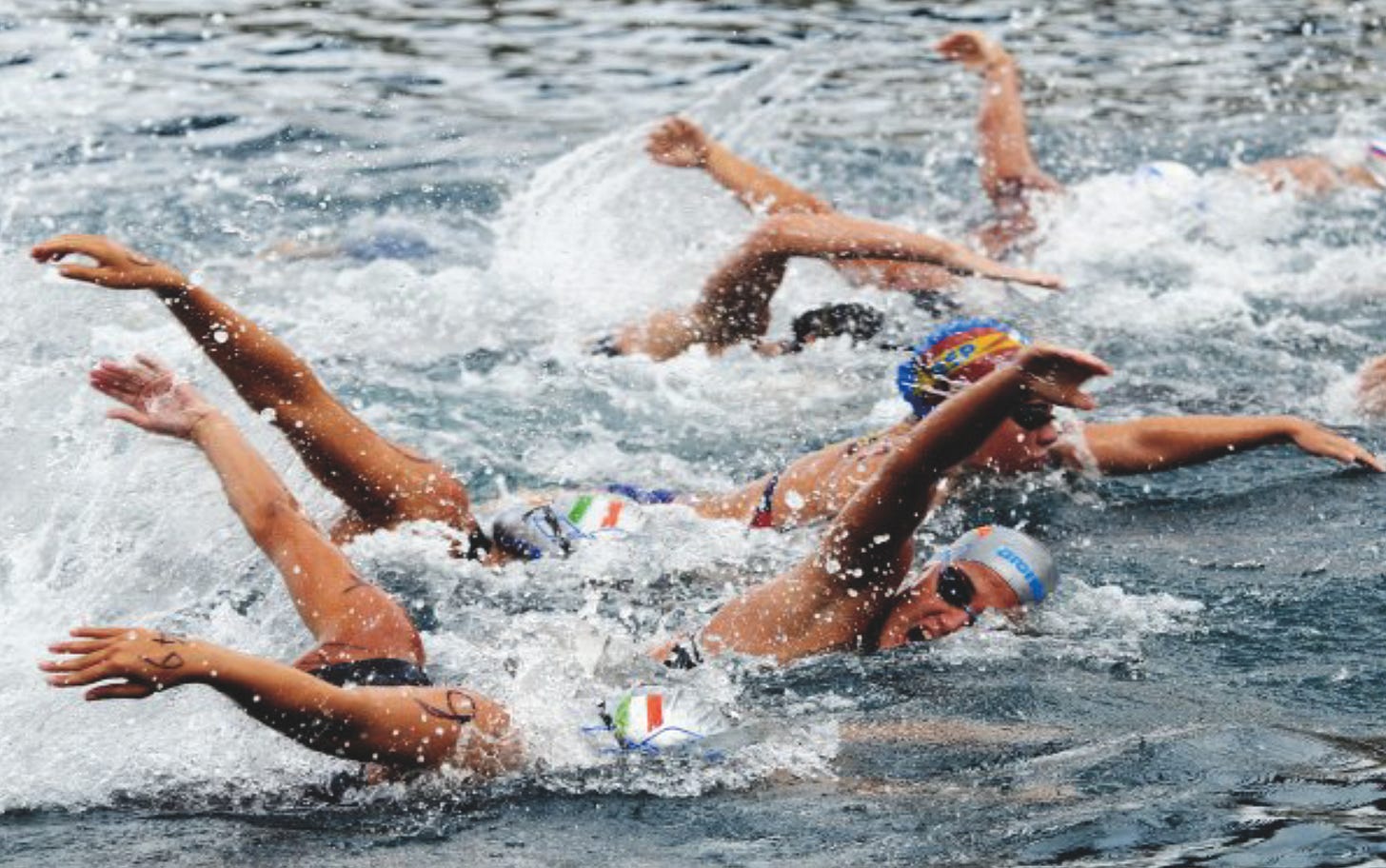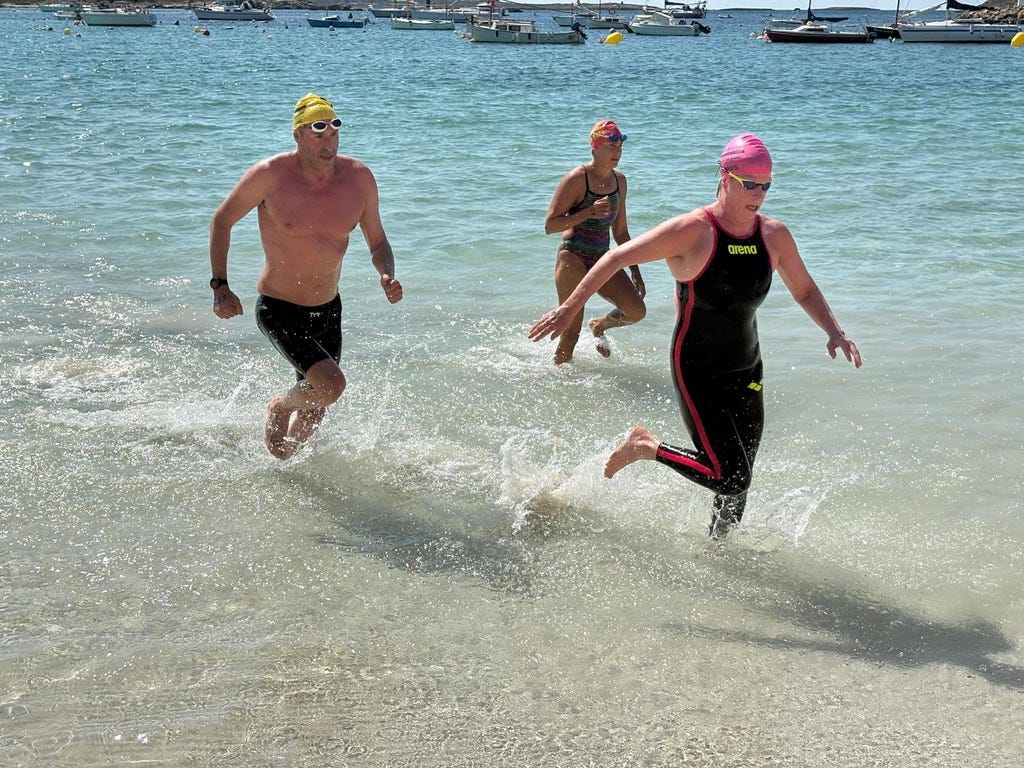🌊Become More Versatile in the Open Water
Why It Matters (and How to Do It)
Hey Swimmers,
It’s easy to think of freestyle as one fixed stroke, performed one way, by all swimmers. But look a little closer - especially in open water - and you’ll see a world of variety. And that’s a good thing, as we shall now see.
At the recent 2025 World Championships in Singapore, the differences between swimmers like Florian Wellbrock and Sven Schwarz, or Summer McIntosh and Katie Ledecky, were clear. The former example used smooth, long strokes; the latter example used higher stroke rates, 2-beat kicks and more assertive styles.
Swim Types: Swinger vs Smooth
In Swim Smooth terms, the former examples are “Smooths”, and the latter “Swingers”. They are all brilliant swimmers. Both styles are effective. But here’s the twist - knowing how and when to adapt your stroke to suit the conditions is key.
Why? Because versatility wins in unpredictable conditions.
Adapt and Thrive in Open Water.
One of the biggest mistakes swimmers make is assuming that what works in the pool will work equally well in the ocean or lake. But rough water, currents, wind, wetsuits, and pack dynamics all change the game.
The most successful open water swimmers are those who can adapt their stroke depending on the situation. That could mean raising their stroke rate, adjusting their arm recovery, or changing their breathing pattern mid-race.
7 Key Adaptations for Open Water Versatility.
Here’s what we’ve observed in swimmers who thrive across a range of open water environments:
1. Straighter Arm Recovery.
Swingers use a straighter arm recovery to avoid catching hands in chop or on nearby swimmers. This is more practical than the classic high elbow, especially in packs.
2. Better Wetsuit Compatibility.
Straighter arm recoveries also suit wetsuit swimming, allowing greater shoulder freedom and reducing fatigue caused by neoprene resistance.
3. Higher Stroke Rate.
This helps maintain rhythm and control in rough conditions and during mass starts. It’s like cycling in a lower gear - more stable and less interrupted.
4. Stroke Length Adjustment.
Good swimmers shorten their strokes when ploughing out through waves, then lengthen and kick harder when surfing back in with the swell.
5. Sighting Efficiency.
Swingers often look like water polo players, integrating their sighting into their stroke rhythm. This is especially valuable in choppy or low-visibility water.
6. Drafting Resilience.
“Behind every smooth is a gaggle of blood-sucking swingers” is a phrase I coined many years ago and one which I think about all the time when I race myself. In group races, swingers often hold drafts better thanks to their higher rhythm and mental resilience in tight packs.
7. Stroke Timing with the Swell.
Synchronising with big rolling waves improves efficiency. Swingers often adapt tempo more easily, though it can lead to over-revving without awareness.
Two of the Best Examples? Sharon van Rouwendaal & Florian Wellbrock.
Dutch double-Olympic gold medallist in Rio de Janeiro (2016) and Paris (2024), in the 10km marathon swim, Sharon van Rouwendaal, is a master of stroke adaptability. In Paris she increased her stroke rate and shortened her stroke significantly as she ploughed through the full force of the oncoming current of the River Seine, but lengthened her stroke and brought in a more rhythmical kick when she had the current behind her.
The 2025 4-time World Championship gold medallist in the 3km, 5km, 10km and open water 4 X 1500 meter relay, Florian Wellbrock had a simply amazing meet in Singapore. This contrasted heavily with his disappointing performance at the Paris Olympics just 12 months earlier.
So, what went wrong in Paris?
Wellbrock, who had been among the leaders for much of the race, lost ground in the final lap after swimming wide around a bend dropping from second down to seventh and ultimately finished eighth, approximately a minute behind the winner, Kristóf Rasovszky of Hungary. His long, smooth strokes worked amazingly well down stream, but he struggled against the higher cadence of Rasovszky against the current, and was always seen to be dropping back at this point.
In Singapore, however, he totally dominated in some very challenging conditions. The difference? He'd prepared specifically for them, especially the 31 degrees water temperature. The choppy conditions would have ordinarily suited the silver medallist, Italian, Gregorio Paltrinieri's style more, but that heat adaptation was, for Wellbrock, priceless.
Versatility isn’t about abandoning your natural style or training regime entirely - it’s about knowing when and how to change.
What All Good Swimmers Share.
Regardless of whether they’re smooths or swingers, successful swimmers tend to:
1) Maintain good body position.
2) Exhale smoothly and rhythmically.
3) Rotate effectively (45 to 60 degrees along the long axis of the spine).
4) Have a consistent, rhythmical stroke.
5) Possess great feel for the water.
6) Kick efficiently - never overdone, never dragging.
Understand how to adapt, not just repeat.
Let the Conditions Guide You.
Your goal isn’t to be “a smooth” or “a swinger.” It’s to be an adaptable swimmer, able to adjust your style based on the water, the race, and how your body feels on the day.
Want to improve this adaptability? Get out there and practise in different conditions. Mix up your stroke rate. Vary your arm recovery. Try different breathing patterns. Learn how each change affects your speed, control, and comfort.
Because in open water, the most versatile swimmer is often the most successful.
Next week, we’ll talk training tools - what we love, how we use them, and why they can change the way you train.
Until then, your coach, Paul.









